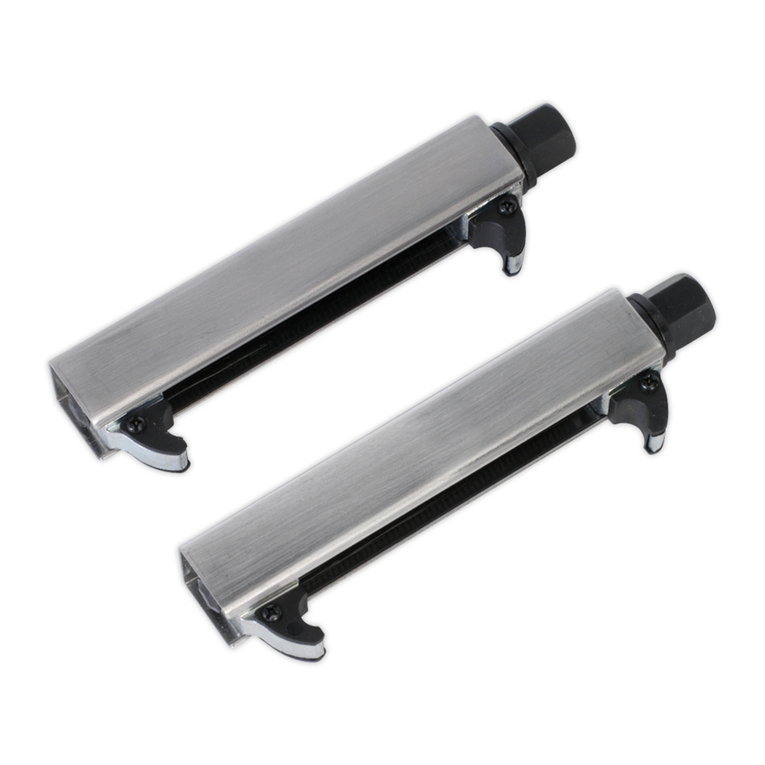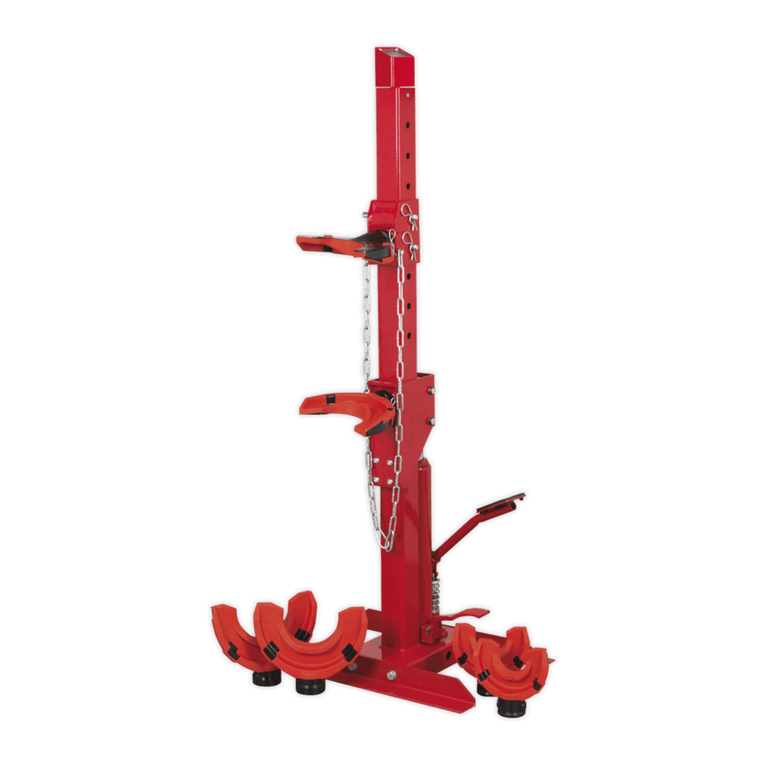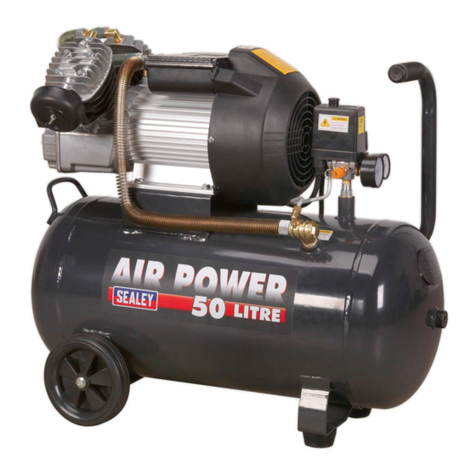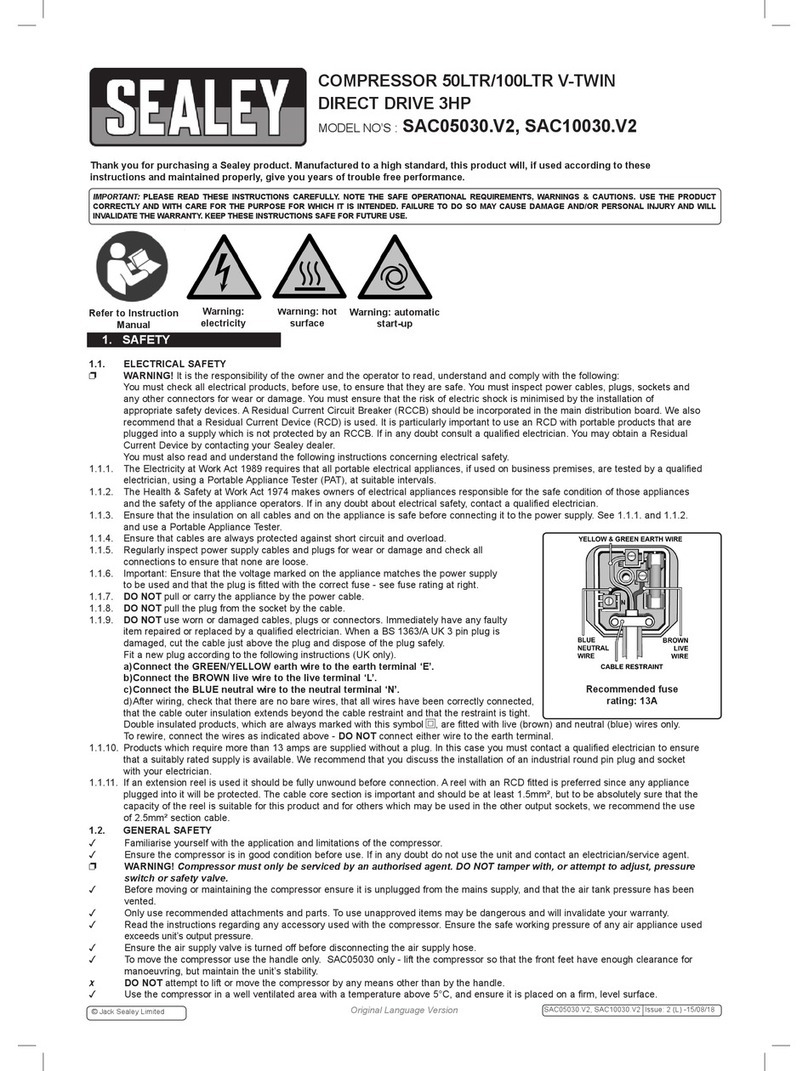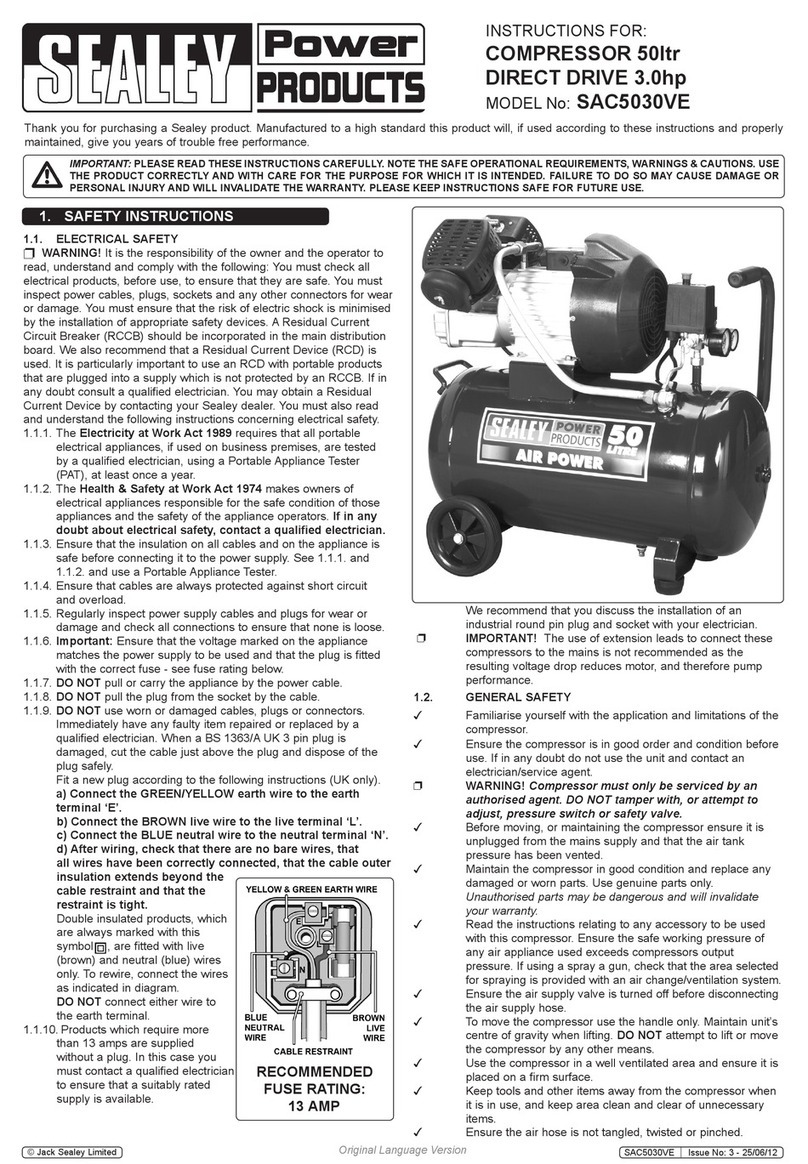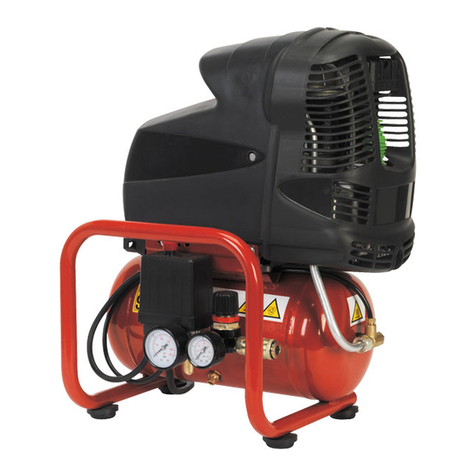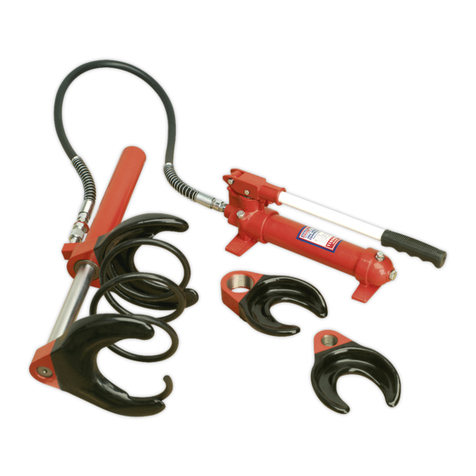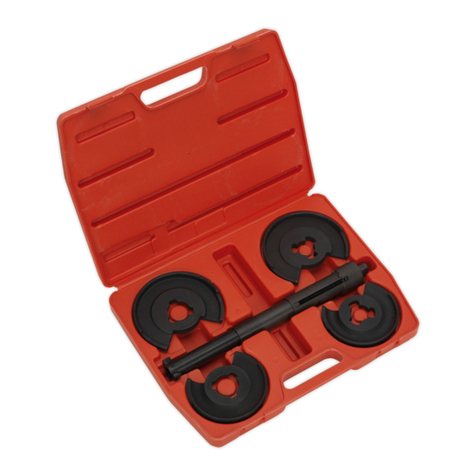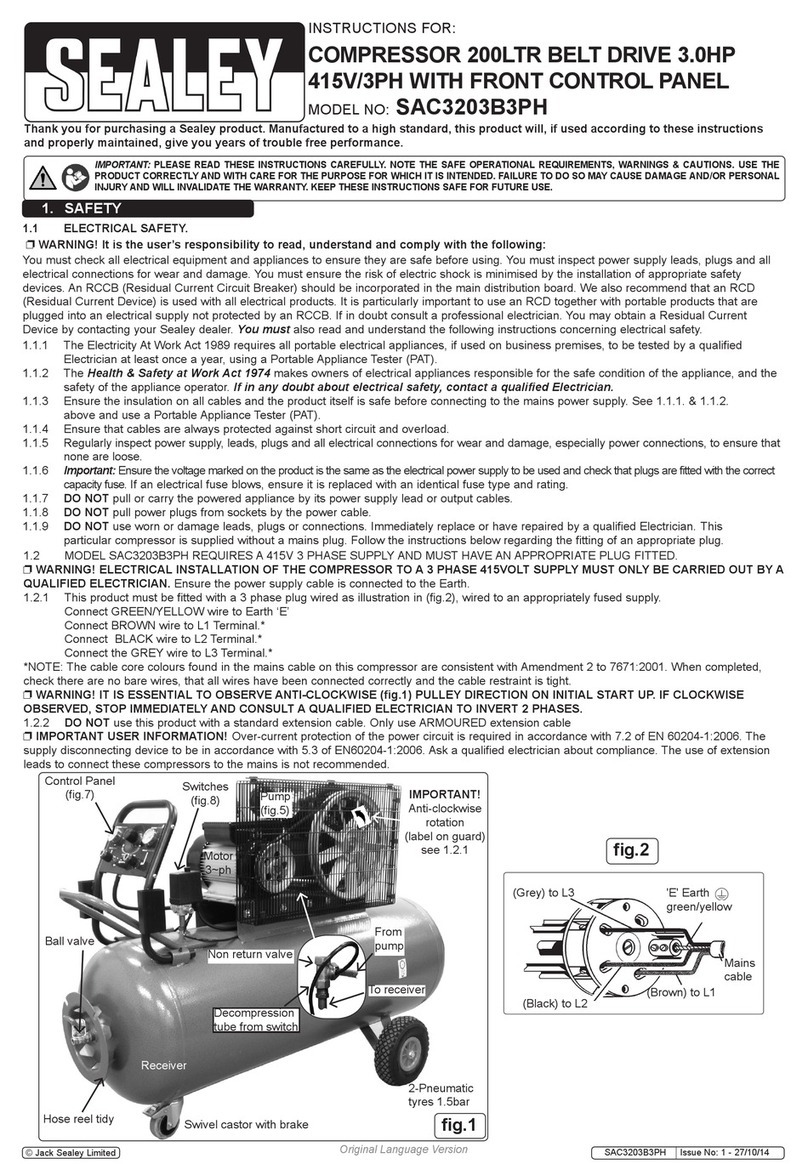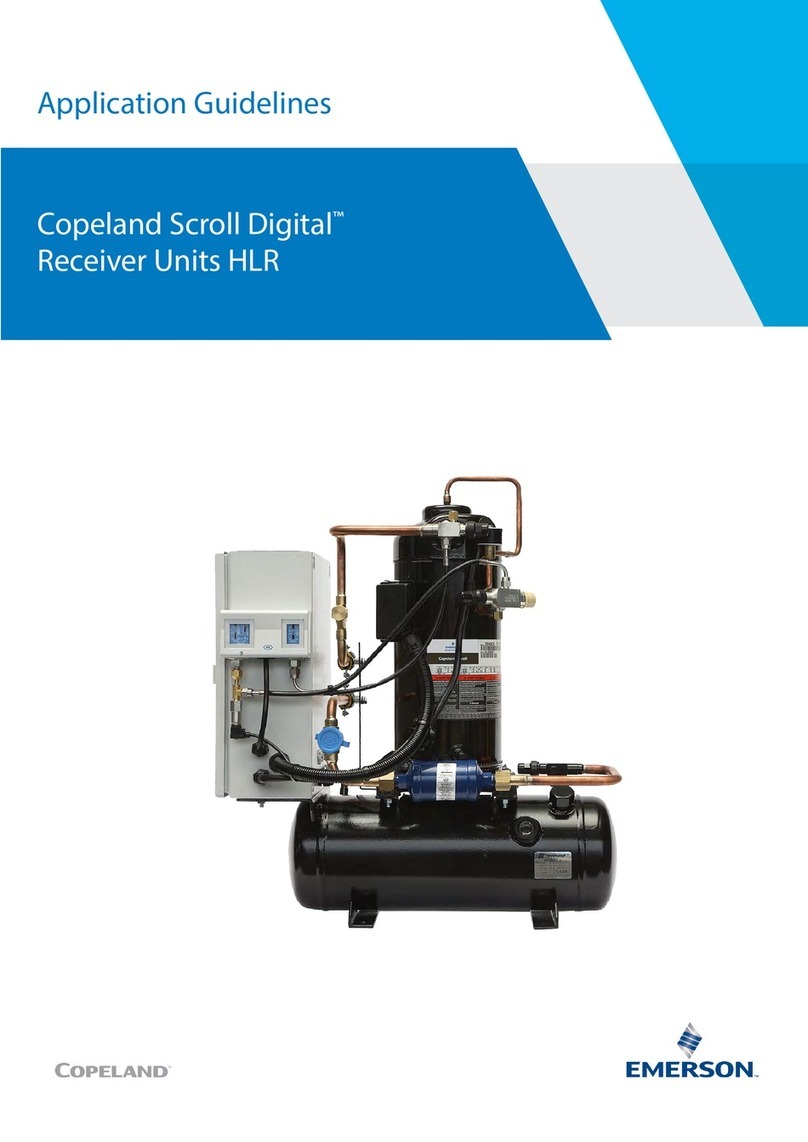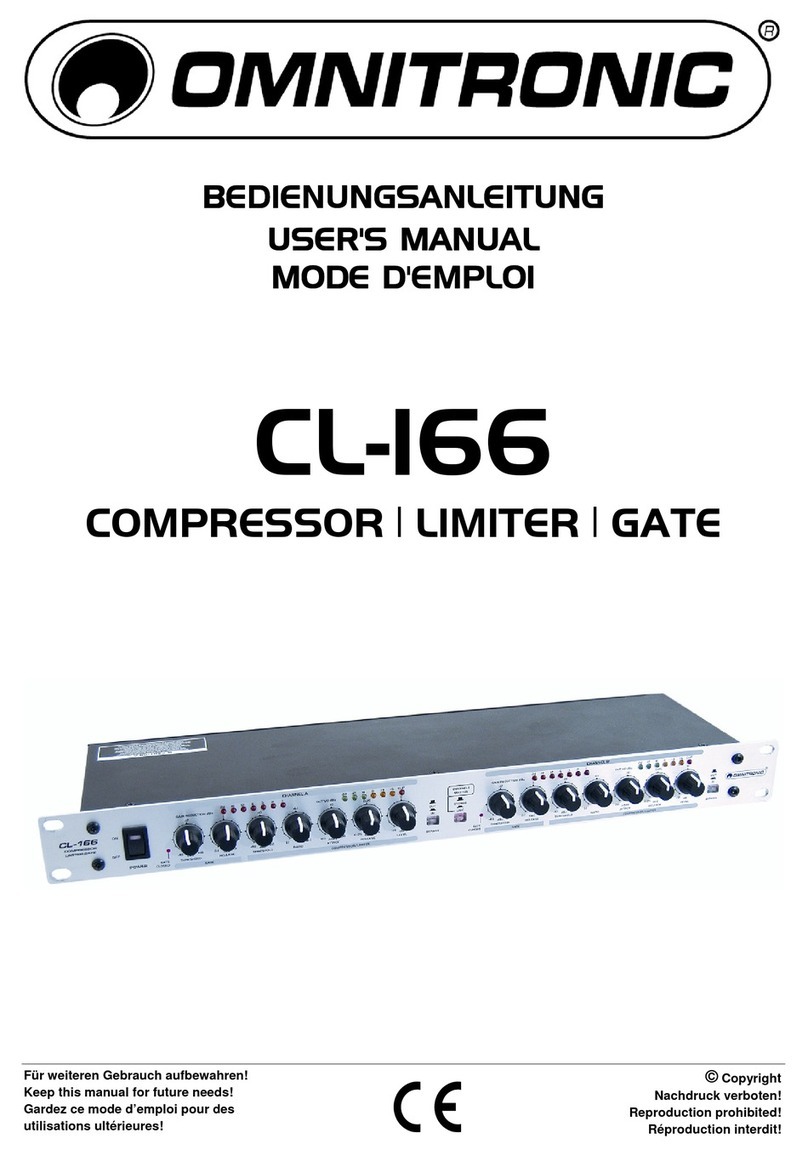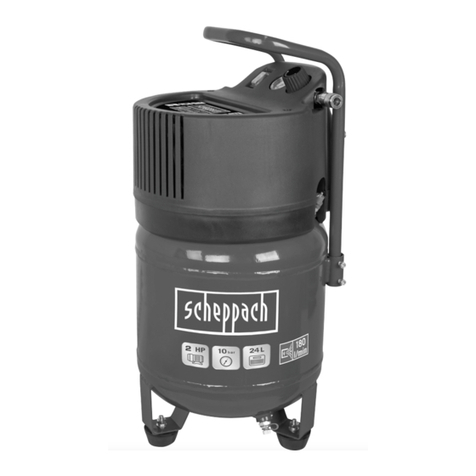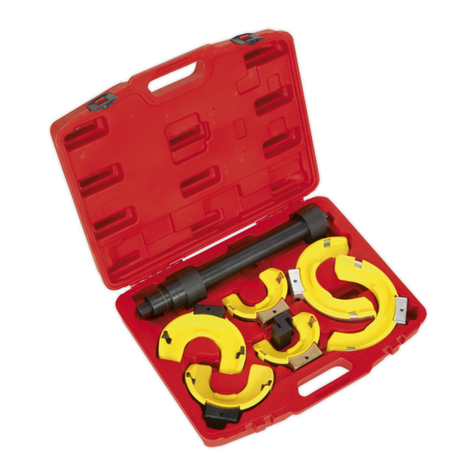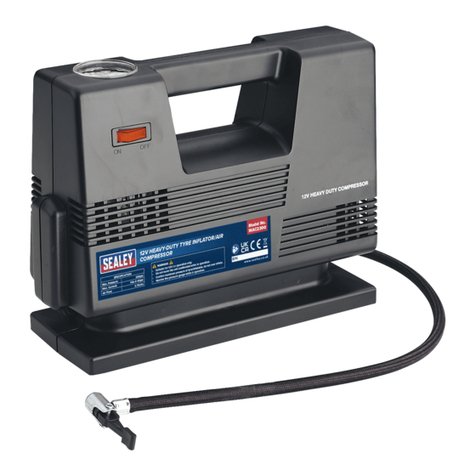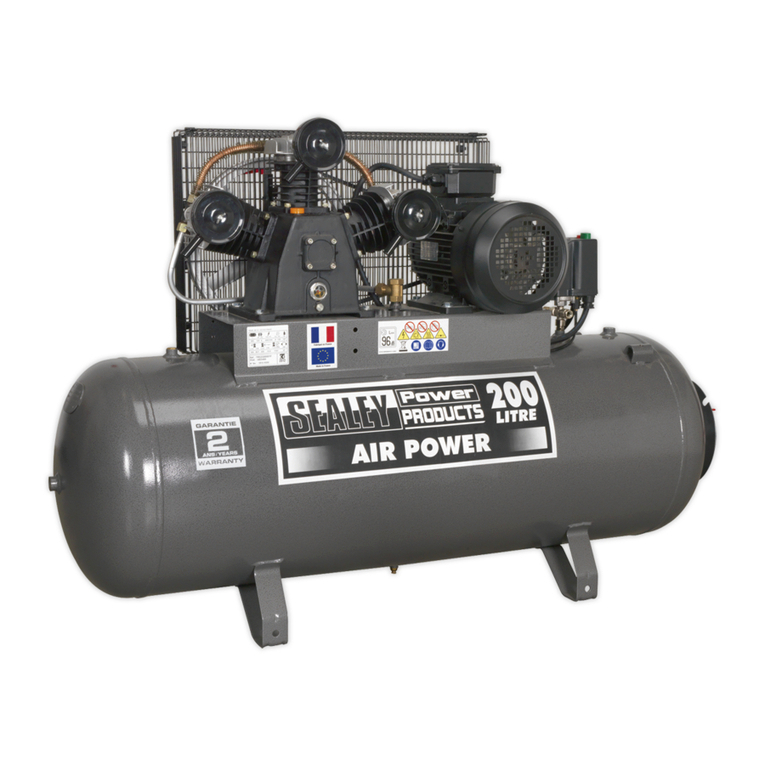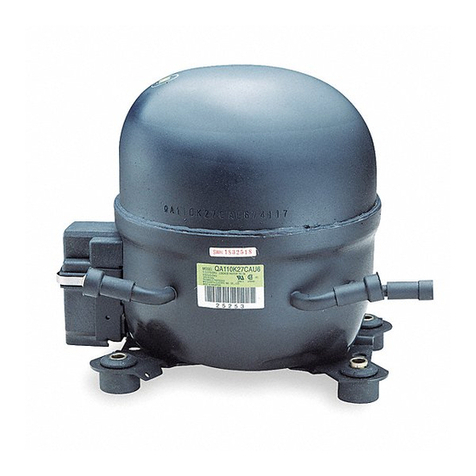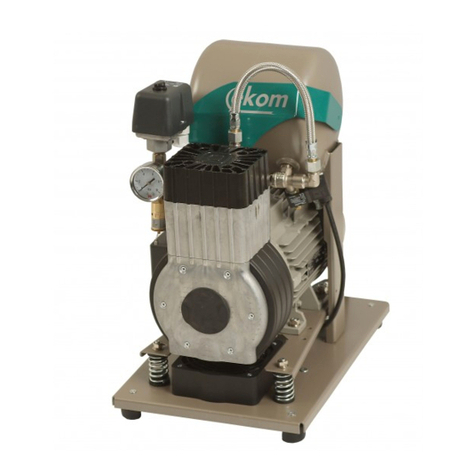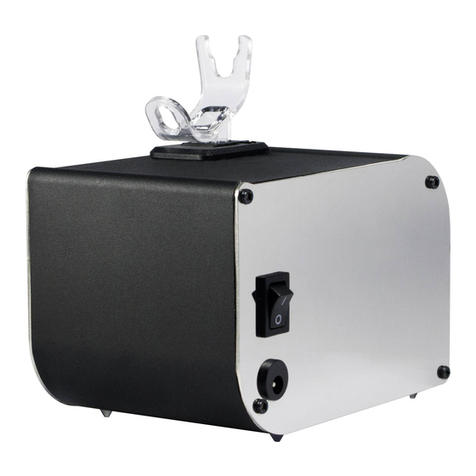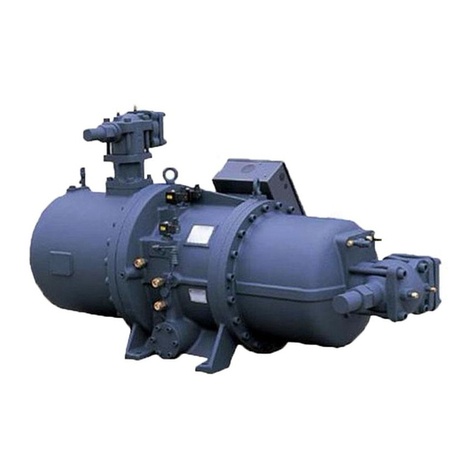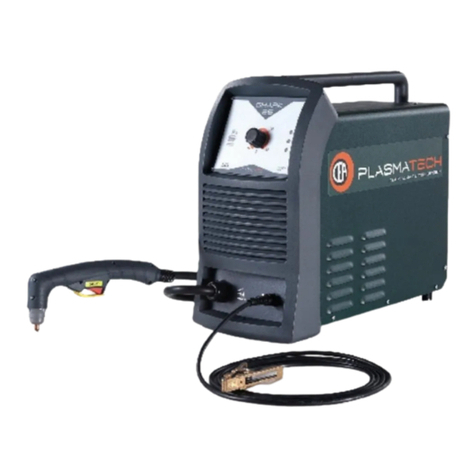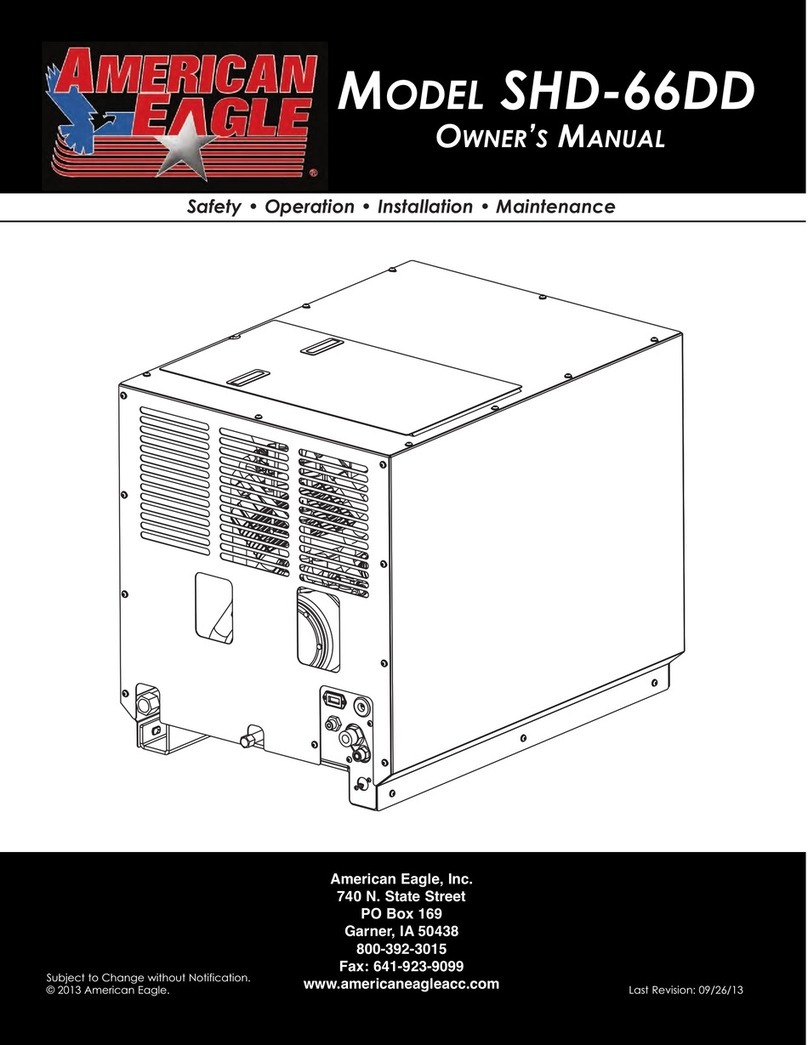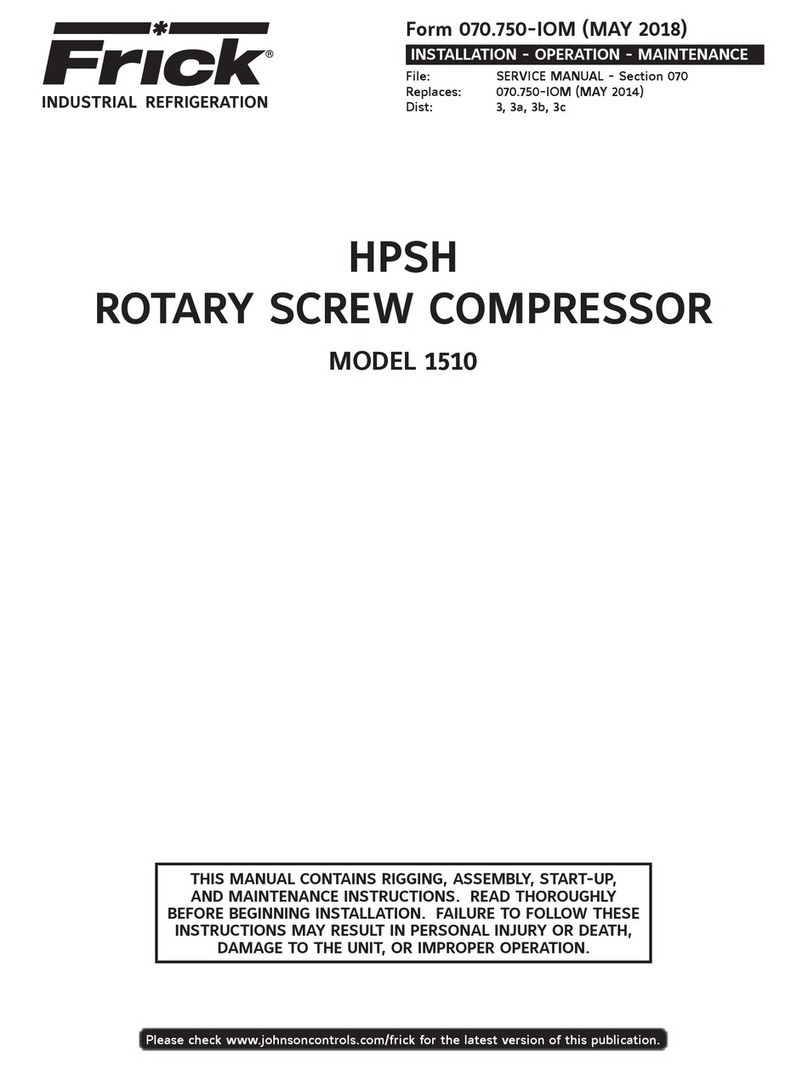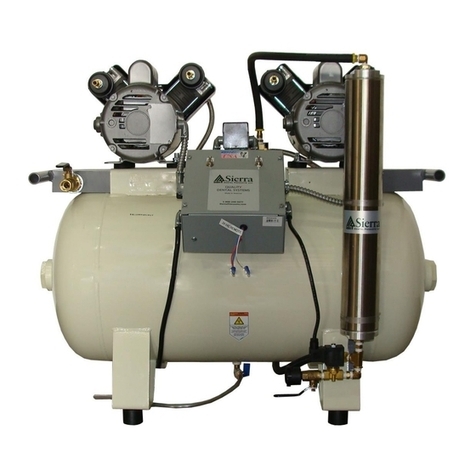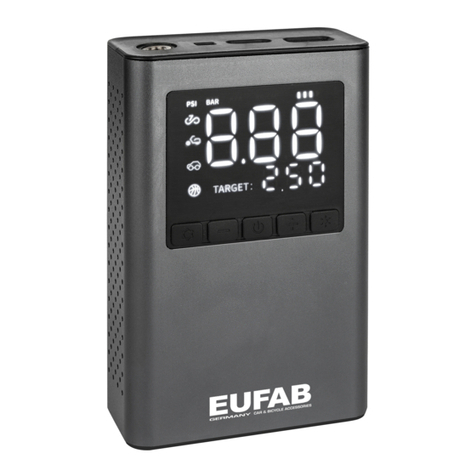
9Ensure the air supply valve is turned off before disconnecting the air supply hose.
9To move a transportable compressor use the handle only. Lift the compressor so that the front leg gives enough clearance for
manoeuvring but maintain unit’s centre of gravity in front of the wheels. DO NOT attempt to lift or move the compressor by any other
means.
9Use the compressor in a well ventilated area and ensure it is placed on a firm surface.
9Keep tools and other items away from the compressor when it is in use, and keep area clean and clear of unnecessary items.
9Ensure the air hose is not tangled, twisted or pinched.
9Keep children and unauthorised persons away from the working area.
9Only move the compressor by the handle if portable.
8DO NOT dis-assemble compressor for any reason. The unit must be checked by qualified personnel only.
8DO NOT use the compressor outdoors, or in damp, or wet locations.
8DO NOT operate within the vicinity of flammable liquids, gases or solids.
8DO NOT touch compressor cylinder, cylinder head or pipe from head to tank as these may be hot.
8DO NOT use this product to perform a task for which it has not been designed.
8DO NOT deface the certification plate attached to the compressor tank.
8DO NOT cover the compressor or restrict air flow around the unit whilst operating.
▲DANGER! DO NOT direct the output jet of air towards people or animals.
8DO NOT operate the compressor without an air filter.
8DO NOT allow anyone to operate the compressor unless they have received full instructions.
WARNING! The air tank is a pressure vessel and the following safety measures apply:
8DO NOT tamper with the safety valve, DO NOT modify or alter the tank in any way and DO NOT strap or weld anything to the tank.
8DO NOT subject the tank to impact, vibration or to heat and DO NOT allow contact with abrasives or corrosives.
9Drain condensation from tank daily and inspect inside walls for corrosion every three months and have a detailed tank inspection carried
out annually. The tank shell must not fall below the certified thickness at any point.
WARNING! If an electrical fuse blows, ensure it is replaced with an identical fuse type and rating.
9When not in use, store the compressor carefully in a safe, dry, childproof location.
9When the compressor is not in use it should be switched off, disconnected from the mains supply and the air drained from the tank.
8DO NOT carry out any welding operations on any pressurised parts of the vessel.
1.3. INSPECTION OF PRESSURE TANK BOTH INTERNAL AND EXTERNAL
1.3.1. Under the Pressure systems Safety Regulations 2000 it is the responsibility of the owner of the compressor to initiate
a system of inspection that both denes the frequency of the inspection and appoints a person who has specic responsibility for
carrying out the inspection.
2. INTRODUCTION
A V-pump belt driven compressor, 150/200ltr, 3hp with bespoke front control panel, with two outlets, one regulated and one direct. The
pump features heavy-duty fully cast cylinders, capped by alloy heads for improved heat dissipation and long life. Suitable for professional
workshop applications. Powered by a heavy-duty induction motor for reliable operation. Twin capacitors and a centrifugal
switch aid trouble free startup on a good 16amp supply (see 1.1.6 for power options). Precision welded receiver tank manufactured to
meet Pressure Vessel Directive 2009/105/EC. Fitted with fully automatic pressure cut out switch, air regulator, received and supply
pressure guages. Supplied with handle and wheels for easy manoeuvrability.
3. SPECIFICATION
4. ASSEMBLY
4.1. Remove compressor from packaging and inspect for any shortages or damage. If anything is found to be missing or damaged contact
your supplier.
4.2. Save the packing material for future transportation of the compressor. We recommend that you store the packing in a safe location, at
least for the period of the guarantee. Then, if necessary, it will be easier to send the compressor to the service centre.
4.3. Confirm that the mains voltage corresponds with the voltage shown on the compressor data plate.
4.4. Assemble the wheels and swivel castor using the nuts, bolts and washers supplied (fig.8).
4.5. The compressor should be operated on a horizontal flat surface, or one that does not exceed 5° either transversely (tyres fully inflated to
1.5bar) or longitudinally with chocks (fig.3), and should be in a position that allows good air circulation around the unit (see 1000mm
nominal).
4.6. Before using the compressor check the oil level by referring to the oil sight glass (fig.4C). On a horizontal surface, if the oil level is not up
to the red centre mark it should be further topped up with recommended oil (See section 5.7). To top up unscrew plug (fig.4B).
Original Language Version
© Jack Sealey Limited
Model No. SAC3153B SAC3203B
Motor Output 3.0hp 3.0hp
Voltage/phase 230V - 1ph 230V - 1 ph
Minimum Rated Supply 16A (see 1.1.6 for power options) 16A (see 1.1.6 for power options)
Speed 1243rpm 1243rpm
Noise Level 96dB(A) 96dB(A)
Air Displacement cfm(ltr/min) 13.4(380) 13.4(380)
Maximum Free Air Delivery cfm(ltr/min) 10.95(310) 10.95(310)
Maximum Pressure 145psi(10bar) 145psi(10bar)
Receiver Capacity 150ltr 200ltr
Outlet Hi-Flow Quick Release Coupling Hi-Flow Quick Release Coupling
Size (W x D x H) 1210 x 600 x 970mm 1410 x 600 x 1020mm
Weight 89kg 103kg
SAC3153B/SAC3203B Issue 3 (4, 6) 27/09/18
